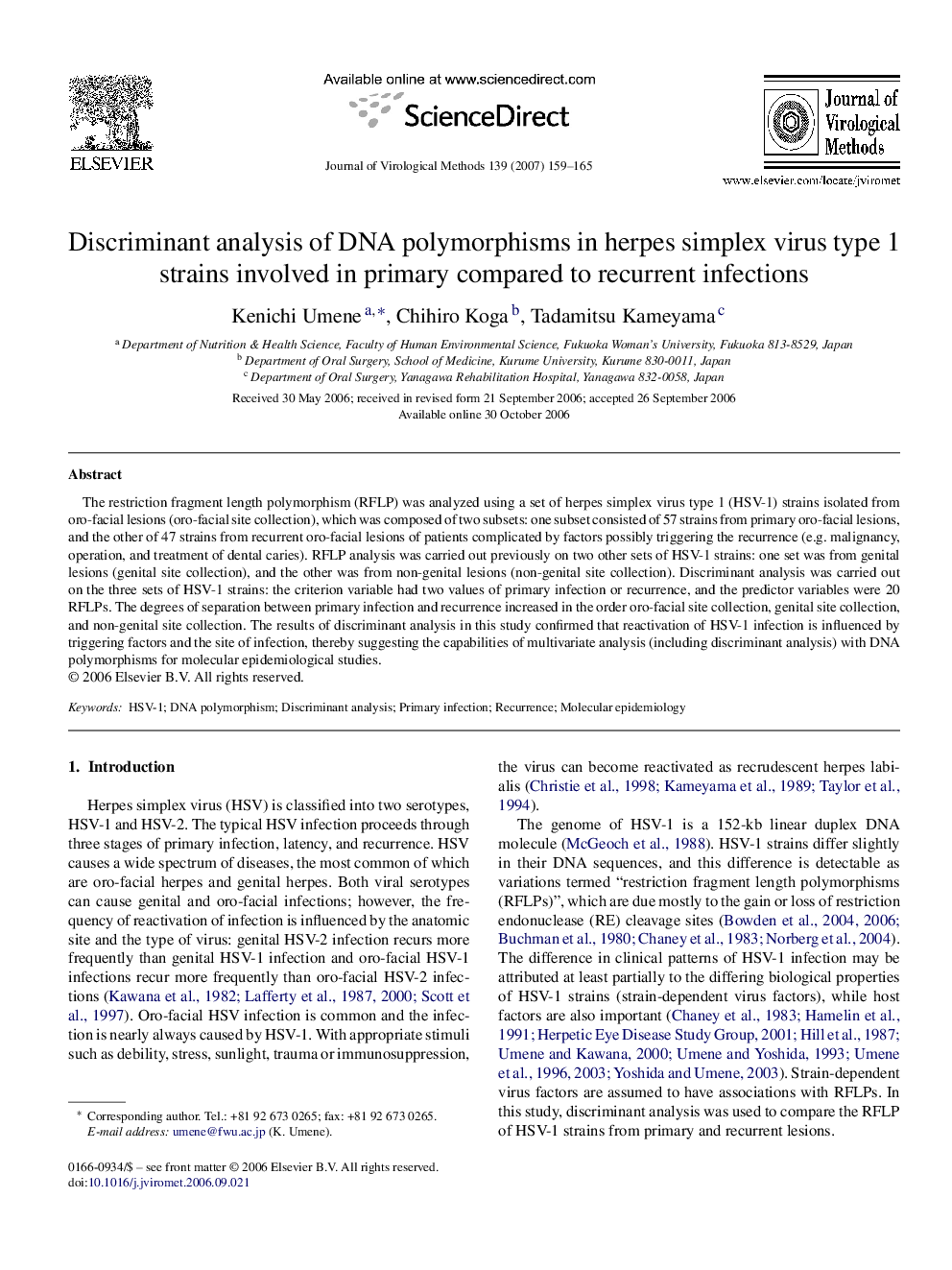| Article ID | Journal | Published Year | Pages | File Type |
|---|---|---|---|---|
| 3408290 | Journal of Virological Methods | 2007 | 7 Pages |
The restriction fragment length polymorphism (RFLP) was analyzed using a set of herpes simplex virus type 1 (HSV-1) strains isolated from oro-facial lesions (oro-facial site collection), which was composed of two subsets: one subset consisted of 57 strains from primary oro-facial lesions, and the other of 47 strains from recurrent oro-facial lesions of patients complicated by factors possibly triggering the recurrence (e.g. malignancy, operation, and treatment of dental caries). RFLP analysis was carried out previously on two other sets of HSV-1 strains: one set was from genital lesions (genital site collection), and the other was from non-genital lesions (non-genital site collection). Discriminant analysis was carried out on the three sets of HSV-1 strains: the criterion variable had two values of primary infection or recurrence, and the predictor variables were 20 RFLPs. The degrees of separation between primary infection and recurrence increased in the order oro-facial site collection, genital site collection, and non-genital site collection. The results of discriminant analysis in this study confirmed that reactivation of HSV-1 infection is influenced by triggering factors and the site of infection, thereby suggesting the capabilities of multivariate analysis (including discriminant analysis) with DNA polymorphisms for molecular epidemiological studies.
